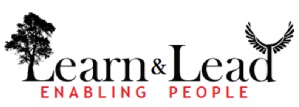- Michele Martin commented that if only companies realized people who learn were high performers vs. people who want to be trained.
- Viplav Baxi in a follow up post provides his insights about what could possibly be structured construction and tracking models for teaching-learning in a Learning 2.0 world.
- Jane Hart urges organizations to measure performance rather than training or learning.
- Sarah Stewart asks how can we embed social networking in people’s days and sell it to them as something that has value.
- Claire Thompson provides us with the example of Google offering 20% of their time to work on what they are passionate about.
- Bill shares his frustration with the IS departments and the extra paranoia about allowing access to anything that even might compromise integrity and safety of personal health information. He shares his attempt at using Sharepoint Portal within the firewall to work around fears of IS departments.
- Poonam Sharma concurs with the about societal pressures at workplace and talks about management impact on training.
- Dave Ferguson wonders if some of the “1.0” aspect of workplace learning isn’t due simply to inertia, especially on the part of management. And organizations should be willing to seek out ways to expand the skills and the opportunities for its most important asset — its employees.
- Jeff Cobb feels that one of the core issues is that corporate training often needs to demonstrate compliance of some sort or mastery of hard skills, and 1.0 approaches are simply more reliable and proven for this. He also feels there is little notion of a continuing “liberal” education in the corporate space.
 Notwithstanding the use of Web 2.0 tools, I believe the core issue is that organizations’ focus on learning at workplace vs. training. I have seen that typically smaller teams with strong leaders have a better culture of learning. While the use of Web 2.0 tools is still limited (a combination of firewall issues, inertia, societal pressures are contributing factors of not using Web 2.0 tools), there are teams within our large organization that spend a lot of time “learning” together. I have found that these teams had passionate leaders who are keen on learning. Mid-level managers have a task on their hands for building the learning culture within their teams. Mid-level managers will find that they will be more successful by encouraging their teams to experiment and share their learning with others in the team.
Notwithstanding the use of Web 2.0 tools, I believe the core issue is that organizations’ focus on learning at workplace vs. training. I have seen that typically smaller teams with strong leaders have a better culture of learning. While the use of Web 2.0 tools is still limited (a combination of firewall issues, inertia, societal pressures are contributing factors of not using Web 2.0 tools), there are teams within our large organization that spend a lot of time “learning” together. I have found that these teams had passionate leaders who are keen on learning. Mid-level managers have a task on their hands for building the learning culture within their teams. Mid-level managers will find that they will be more successful by encouraging their teams to experiment and share their learning with others in the team.

